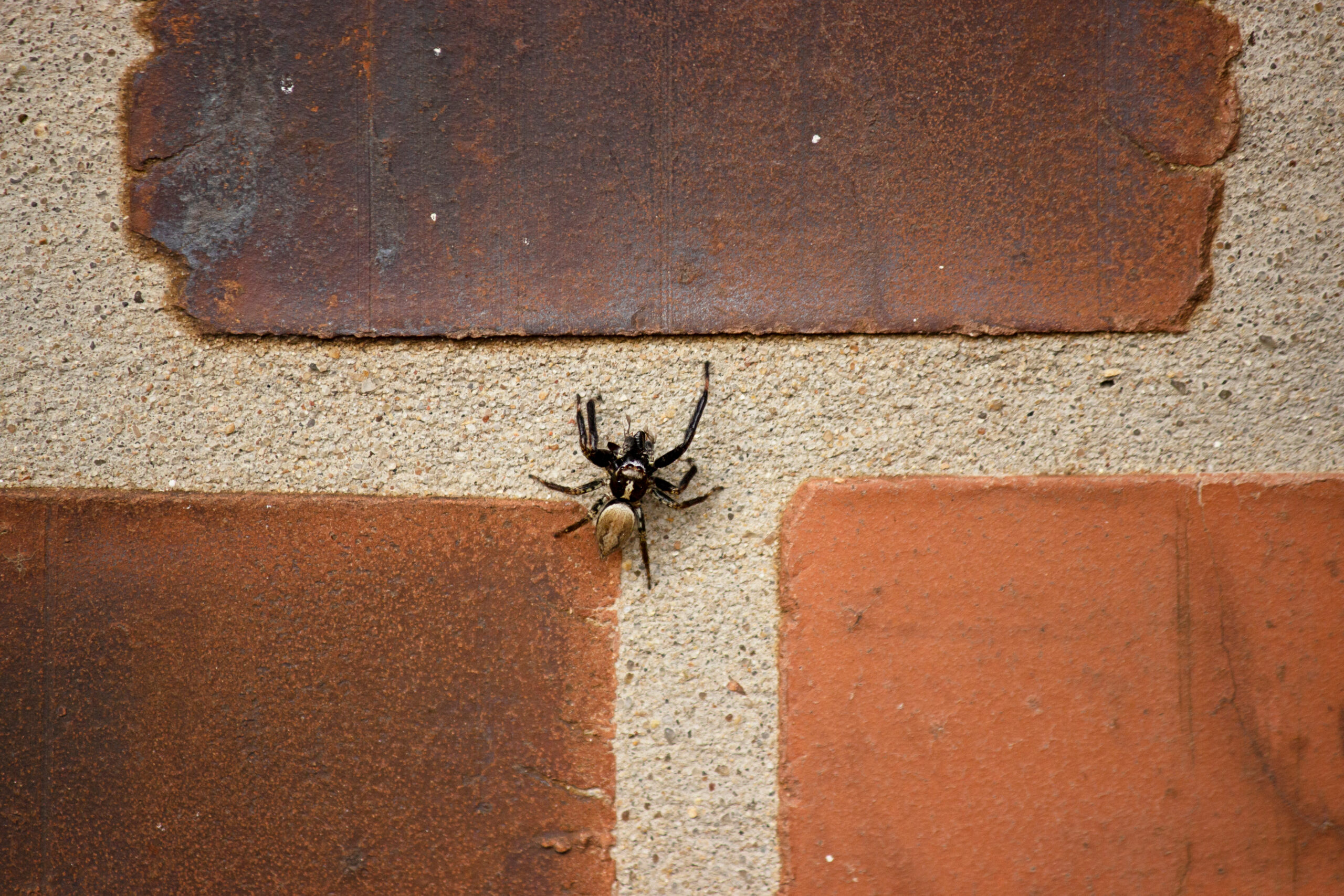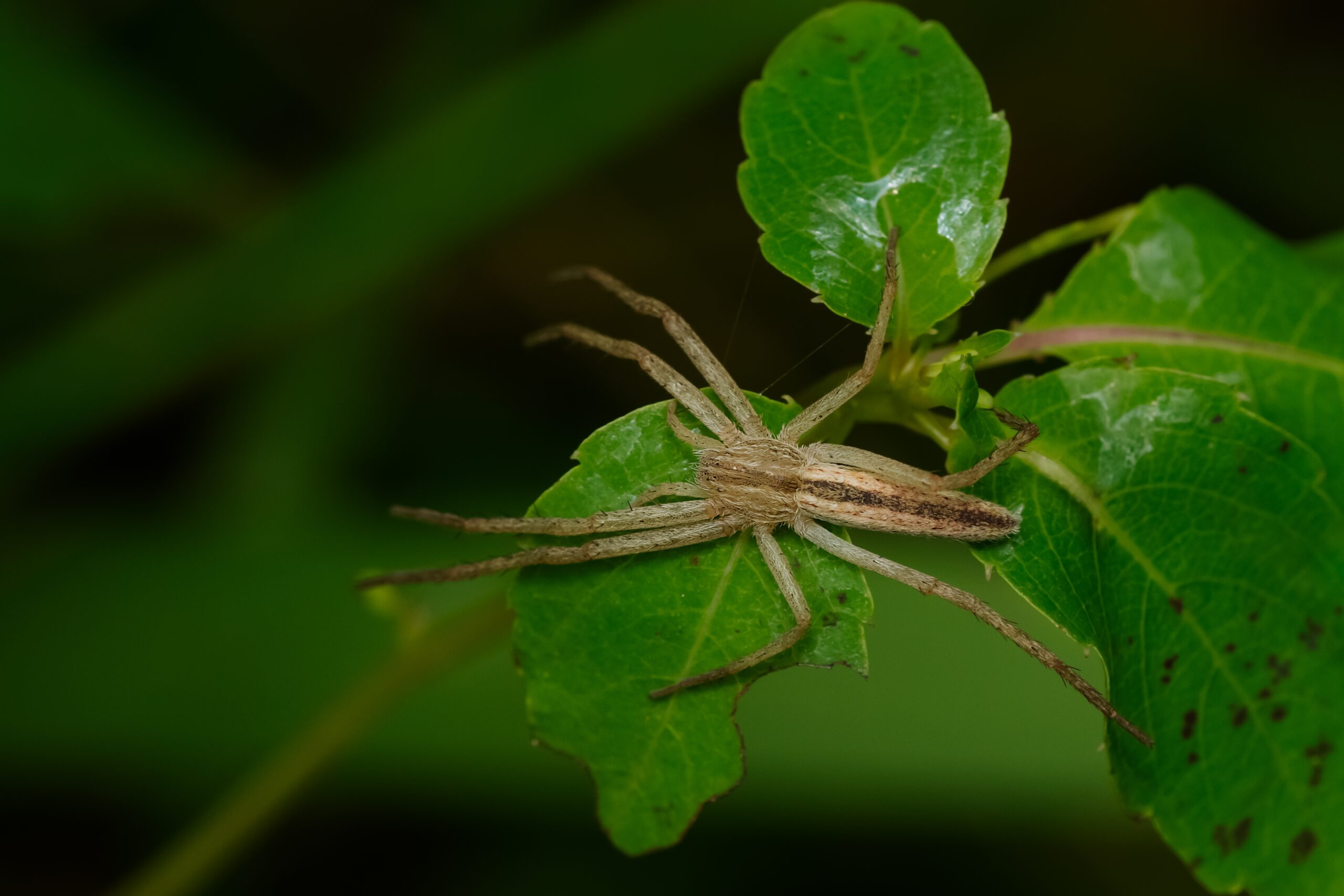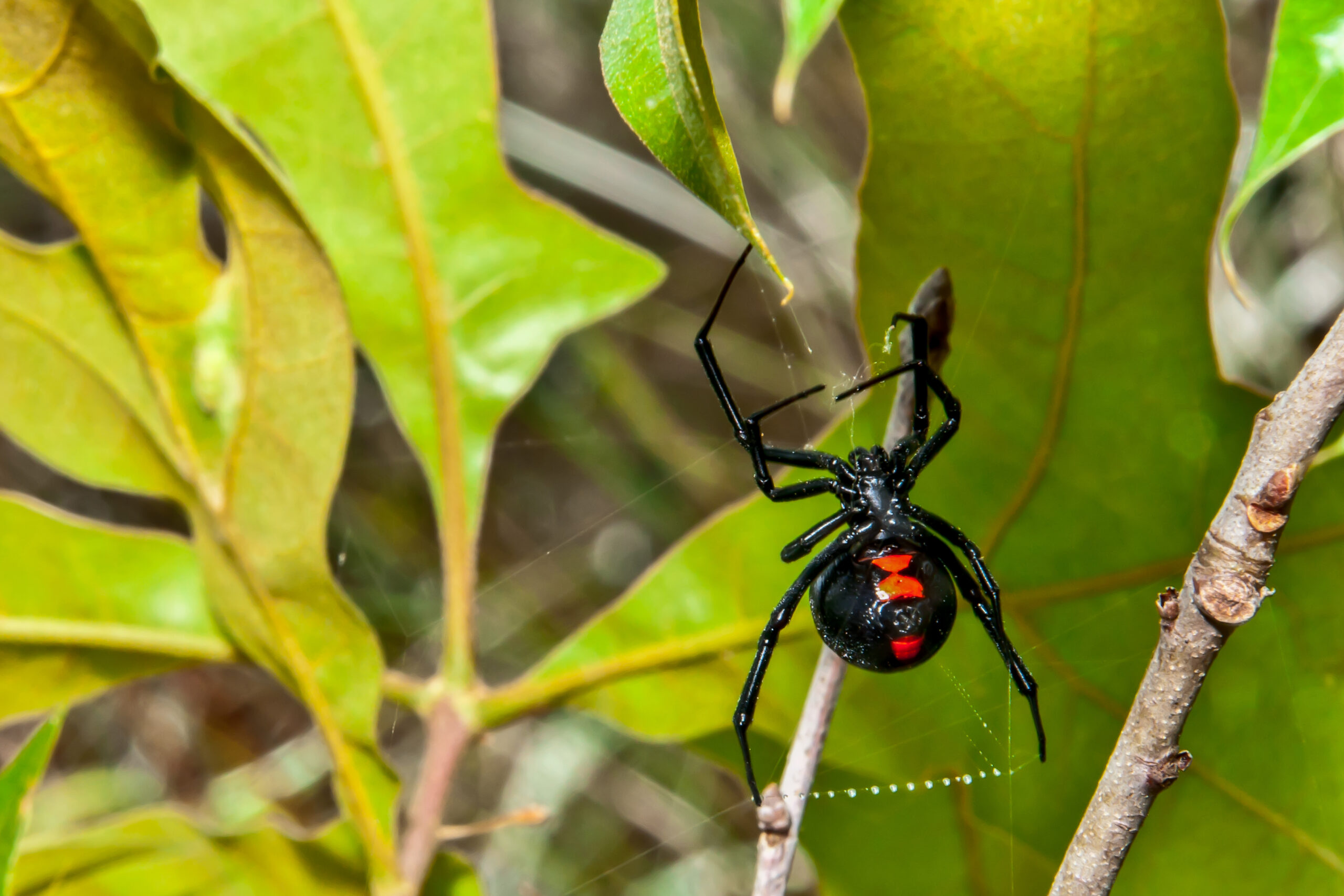Analyzing the Spider Superpowers of the Original Neighborhood Spider-Man – Part 2
Analyzing the Spider Superpowers of the Original Neighborhood Spider-Man – Part 2
Welcome to part two of our mini-series on comparing Spider-Man’s (Tobey’s version) powers to those of real spiders! If you missed the first blog, you can check it out here to have the full analysis of his powers. Today, we are focusing on the other three main superpowers that Spidey exhibits across the trilogy. A nerdy photographer by day and an agile web-slinger by night, this Spider-Man has all kinds of powers that come in handy against the dangerous supervillains he faces.
It’s fun to watch these movies and enjoy the original cinematic depiction of Spidey — along with all of the iconic lines that have been extensively quoted since — but we feel the need to ask the question: how does this Spider-Man compare to our real arachnids? We are continuing our quest to answer this question in the final addition to the mini-series, so let’s dive into three more powers that this web-slinger clearly uses in his various adventures throughout the Spider-Man movies.
Wall Crawl
This superpower kind of works in tandem with the web production, as both superpowers demonstrate how spiders can work themselves both into and out of sticky situations. In these Spider-Man films, the web-slinger shows that this power is instinctive yet still a conscious choice. Meaning, he can naturally scale a building without needing to extensively prepare for it, but he also needs to stay focused in order to do the task. It can be detrimental if Spider-Man doesn’t have the mental capacity to stick to a wall, like when his powers diminish mid-crawl because he starts to give up on Spider-Man in Spider-Man 2. Tobey’s depiction of Spidey even shows the audience how he can physically stick to surfaces. In a classic Raimi shot, we see the small, sharp hairs grow out of his fingerprints before he begins his first ascent up a building in Spider-Man.
Spiders can also crawl up walls and buildings, but this ability is much less impressive for them than for a human. They actually share a similar feature with Spider-Man for this power, as spiders too are equipped with tiny gripping hairs. These arachnids have the special hairs on the ends of their legs that they use to “stick” to most surfaces. The hairs grip small bumps and grooves on many finishes, like stucco and wood. Most spiders can’t climb up extremely smooth surfaces, like a bathtub, since their hairs don’t have any bumps to hold. One exception to this is the jumping spider, since they can grip onto smooth surfaces with ease. Spider-Man may do some spider-like movements, but it is still far more enjoyable to watch him crawl up a building than a real spider creep up the kitchen wall.
Super Speed
It may seem weird to think of Spider-Man as having super speed since there are plenty of other heroes we can think of that famously have this power. But some people estimate his top speed to be around 300 miles per hour in certain scenarios. This is another power that is first shown on the day after Peter is bitten by the spider, where he easily catches up to the bus that left him in the dust earlier in Spider-Man. The Spider-Man of these movies often uses this ability in conjunction with web-slinging and jumping to get the upper hand on his enemies. His speed can also be applied to his sharp reflexes, which are evident in every fight Spider-Man gets into across the trilogy. He still has this ability, along with all of the others, when he is just Peter Parker. The fact that nerdy Peter was quick enough to save both Mary Jane and himself from Doc Ock’s thrown car in Spider-Man 2 is all the evidence we need for that.
Spiders may seem quick when we see them scurrying across our floors as we try to find an object that will be the squishing tool, but they’re not relatively fast across the animal kingdom. They are definitely agile and can avoid many predators by making quick movements. Hunting spiders can even run in pursuit of their prey, which is a horrifying image on its own. But most spiders are no quicker than the common insect, and they don’t even have the advantage of flying. When comparing the size of the subjects to their respective speeds, Spider-Man is undoubtedly faster. There is one relatively-common spider that is pretty speedy, and that is the giant house spider. It’s one of the fastest species with a maximum speed of 1.2 miles per hour. That may not sound like much, but just picture a large spider running at the slow walking speed of a human and it’s enough to give most people the chills.
Spider Sense
Now for the one we’ve all been waiting for: spidey-sense. This power is the most undefined of them all, especially when you factor in how the other Spider-Men use it. Tobey’s version of Spidey uses his spider sense often, but it’s never really intentional. Most of the times when we see his eyes go wide and his body react before his mind, it’s right before the incoming danger would have hit him. Spidey-sense is essentially precognition of fast-approaching danger, which alerts Peter to move immediately. The worse of a threat it is, the larger his response will be. For instance, in Spider-Man 3, Spider-Man moves his head just in time to miss the bomb Harry threw at his back and even has the reflexes to shoot out a web and fling it back at him. His spider-sense is fueled by adrenaline that gives him the energy to narrowly avoid bullets, people, cars, punches, and other weapons. However, all of this isn’t to say that Spider-Man can predict the future. He doesn’t know the exact danger he is sensing beforehand until it happens seconds later, so Spidey won’t be taking up fortune-telling anytime soon.
Spiders also can’t predict the future, but they do have a sort of spider-sense. They have tiny hairs called trichobothria on their bodies, and these hairs are extremely sensitive. The trichobothria can feel small vibrations in the air, on the spider’s web, and on the ground. This allows the spider to “sense” incoming prey or enemies before they come into view. Black widows do this when they’re in their webs, which is why you might see them perched on the strands like they’re waiting for something. Some spiders also have great eyesight, like jumping spiders, who seem to have all kinds of superpowers for a spider. But all in all, spiders come in second place once again. Their spider-sense is not as powerful as Spidey’s because we can squish spiders without too much of a fight. Spider-Man, on the other hand? Well, you saw what happened to the Green Goblin and Venom. The villains who don’t regain their humanity in time with the encouraging words of Tobey’s Spider-Man quickly learn that this spider is not easily squashed.
Pointe’s Superpower is Solving Pest Problems
Spider-Man is one of the most popular superheroes ever, but actual spiders are far less likable than the friendly web-head. Spiders and other pests that invade our homes are unwelcome guests that can cause us all kinds of problems. From health risks to structural damage, pest infestations carry plenty of risks. That’s why the experienced technicians of Pointe Pest Control are dedicated to solving each pest issue as efficiently as possible! We approach pest problems from all angles in order to ensure that not only are the current pests eliminated, but also that future pests are prevented from invading. Our attentive inspections, customized treatment plans, and non-toxic products all work in conjunction to solve every pest issue you may have. We take pride in keeping our wonderful clients pest-free all year long. Contact us today for a free quote on our thorough pest control services, and remember: with extraordinary pest control comes significant power over pests!
***Disclaimer: Section 107 of the United States Copyright Act recognizes “fair use” copywriter content as such: “Notwithstanding the provisions of sections 106 and 106A, the fair use of a copyrighted work, including such use by reproduction in copies or phono-records or by any other means specified by that section, for proposes such as criticism, comment, news reporting, teaching, scholarship, or research, is not an infringement of copyright.” This blog post may contain certain copyrighted works and characters that were not specifically authorized to be used by the copyrighted holder(s), however, the content on this post qualifies as “commentary” on the copyrighted works under the “fair use” doctrine of the U.S. Copyright Act and is thereby protected by federal law. Furthermore, we do not claim any ownership or creative rights of any characters on this list, and all rights outside of the fair use doctrine belong to the respective owner(s).
Citations
Ayala, N. (2022, June 6). How powerful Holland’s Spider-Man is compared to Maguire & Garfield. Screen Rant. Available at https://screenrant.com/spiderman-mcu-tom-holland-maguire-garfield-powers-comparison/ (Accessed on October 16, 2023).
Di Silvestro, R. (2020, Jaunary 24). Spider-Man vs the real deal: Spider powers. NWF Blog. Available at https://blog.nwf.org/2012/06/spiderman-vs-the-real-deal-spider-powers/ (Accessed on October 16, 2023).
Edwards, J. (2022, April 14). MCU Spider-Man: The 3 Peter Parkers’ powers & personalities. Sideshow. Available at https://www.sideshow.com/blog/mcu-spider-man-different-powers-personalities (Accessed on October 16, 2023).
Hartman, S. (2022, January 10). The evolution of Peter Parker: How Spider-Man has changed over the last 20 years. Final Draft. Available at https://blog.finaldraft.com/the-evolution-of-peter-parker-how-spider-man-has-changed-over-the-last-20-years (Accessed on October 16, 2023).
Howie, S. & Pagano, J. (2023, Setepmeber 1). Seattle’s giant house spiders: Big and fast, but they won’t kill you. Kuow. Available at https://www.kuow.org/stories/giant-house-spiders-they-re-big-they-re-fast-and-they-re-on-the-move-but-uh-don-t-worry (Accessed on October 16, 2023).
Kelly, S. (2021, December 14). No way home: An arachnologist critiques Spider-Man’s powers. BBC Science Focus. Available at https://www.sciencefocus.com/nature/spider-man-powers (Accessed on October 16, 2023).
Menezes, R. (2021, December 16). ‘Spider-Man’ used a real spider, who had to compete for the part. Cracked. Available at https://www.cracked.com/article_32055_spider-man-used-a-real-spider-who-had-to-compete-for-the-part.html (Accessed on October 17, 2023).
Raimi, S. (Director). (2002). Spider-Man [Film]. Marvel Entertainment, Columbia Pictures, Sony Pictures.
Raimi, S. (Director). (2004). Spider-Man 2 [Film]. Marvel Entertainment, Columbia Pictures, Sony Pictures.
Raimi, S. (Director). (2007). Spider-Man 3 [Film]. Marvel Entertainment, Columbia Pictures, Sony Pictures.
Solar, J. (2023, June 27). How did Peter Parker get his powers? (Movies vs. comics). Comic Basics. Available at https://www.comicbasics.com/how-did-peter-parker-get-his-powers-mcu-comics/ (Accessed on October 16, 2023).
Spider-Man (Tobey Maguire). (n.d.). Marvel Movies Fanon Wiki. Retrieved October 16, 2023, from https://marvelmoviesfanon.fandom.com/wiki/Spider-Man_(Tobey_Maguire)
Spider-Man (Tobey Maguire). (n.d.). Spider-Man Films Wiki. Retrieved October 16, 2023, from https://spiderman-films.fandom.com/wiki/Spider-Man_(Tobey_Maguire)
Zemantic, Z. (2019, July 2). Experiencing Spidey-sense in Spider-Man: The science behind science fiction. Connecticut Science Center. Available at https://ctsciencecenter.org/blog/experiencing-spidey-sense-in-spider-man-the-science-behind-science-fiction/ (Accessed on October 16, 2023).
Request a Free Quote Today
(We do not share your data with anybody, and only use it for its intended purpose)





